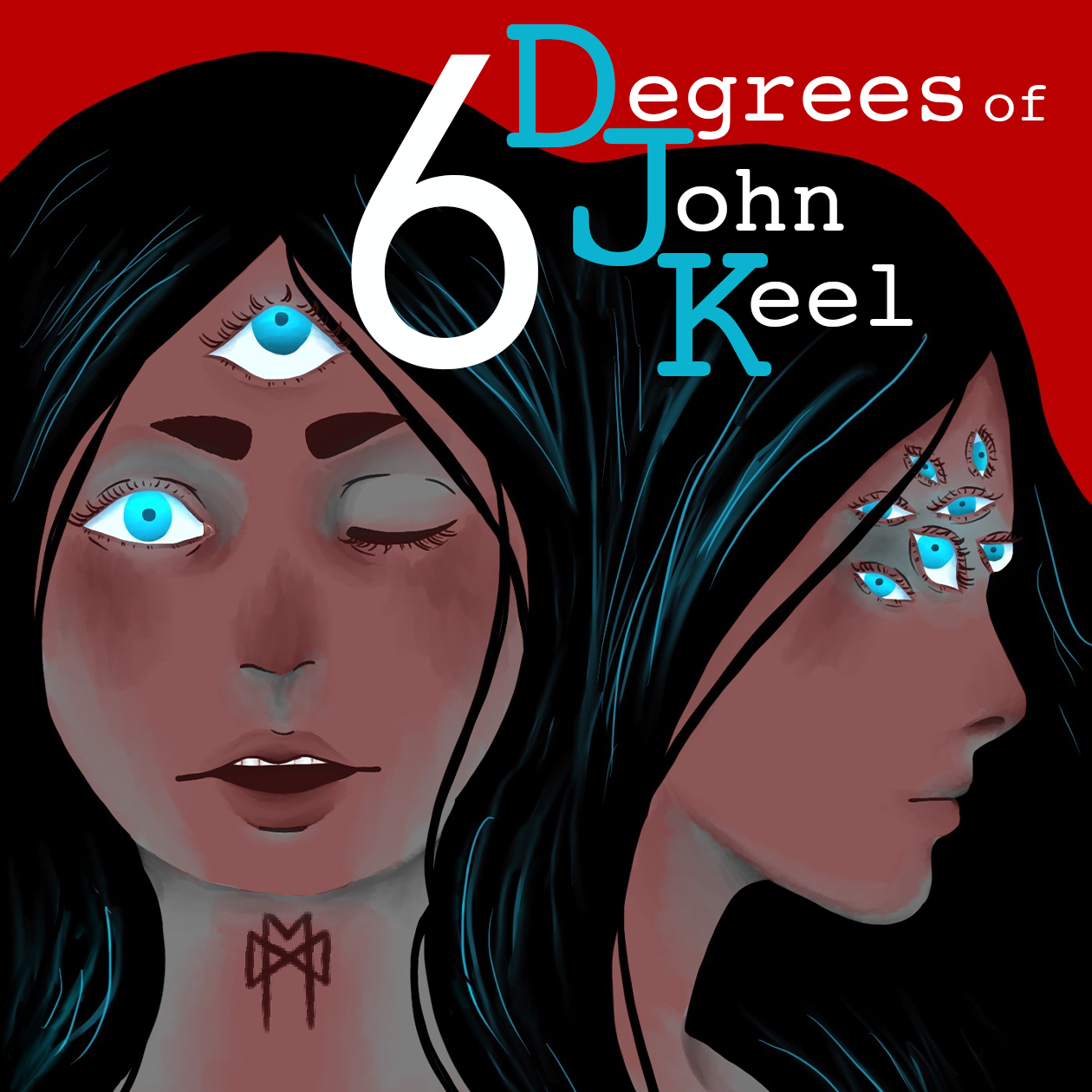Barbara’s Bookshelf Part 1: The Works of John Keel
“Belief is the enemy.”
Yes, this is part of one of my actual bookshelves.
In this, the first of my posts outlining some of my favorite Fortean books, I thought I’d feature the works of the man after whom we named our podcast and blog, John Keel.
Keel wrote a great many books and articles on a great many subjects, but he’s most well known for his works centering on UFO’s and the other “impossibilities” that litter our haunted little blue planet. The work for which he’s best known, of course, is The Mothman Prophesies, the protagonist of which, the eponymous Mothman, is now a pop-culture icon known around the world. And while I admit that it is my favorite of his books, in large part because it illustrates brilliantly the cascade of high strangeness that inundates the lives of some paranormal investigators, I don’t think it’s the book that best articulates his general theories.
The book that best encapsulates his understanding of what all of the various manifestations of the paranormal that he investigated were and how they were related to humanity and the Earth itself would be The Eighth Tower. In that work, the sixth of his books on the paranormal, he articulates his understanding that the seemingly disparate subjects of UFOs, cryptozoology, ghosts, poltergeists, ESP, demonology, religious visions and miracles, fairies and all sorts and types of spirit entities, are in fact all facets of the same phenomena.
This phenomena, which he describes as a sometimes non-physical, energy based, non-biological, non-human intelligence, has interacted with humanity from our beginnings and has manipulated humans and our culture throughout recorded history and beyond. In Keel’s view, it has formed the basis of most of our religions, folklore and superstitions. He posits that this intelligence does this in order to feed from human emotions and belief, and likely doesn’t really have humanity’s best interests in mind.
It’s a rather sobering thought, isn’t it?
All of Keel’s books are worth reading, and all are written in a wildly entertaining style that showcases his innate sense of the absurdity of his explorations into the shadowy world of UFOnauts and Men in Black, Contactees and Bigfoot, Mothman and Magic. But the above two are my favorites. Here’s a complete listing of his works on Fortean topics (in order of publication) with a brief description of their contents, and personal comments of what I thought of them.
Jadoo: His first book, a memoir of his experiences chasing street magicians, fakirs and the Yeti in the Middle East and the Indian subcontinent. Lots of fun to read, full of adventure. Probably the easiest introduction to Keel for a non-Fortean reader.
Operation Trojan Horse: Keel’s first UFO book—a look at the history of UFO’s as well as Keel’s very early rejection of the Extraterrestrial Hypothesis. Parts of it get a little long-winded, but its still great reading.
Strange Creatures from Time and Space: (Later revised and updated as The Complete Guide to Mysterious Beings) This is Keel’s look at monsters of all kinds and descriptions that people year after year report encountering. Hairy Humanoids, Space People, Lake Monsters and Winged Creatures of all sorts lurk therein.
Our Haunted Planet: This book is where Keel first articulates his theory of Ultraterrestrials: an unseen, hidden race of beings who predate humanity, and who live on earth beside us and live to apparently plague us in an alternating malicious and trickster-like fashion. This book is really his first foray into universalizing all paranormal phenomena into one big rollicking ride of experiences.
The Mothman Prophecies: With this book, Keel hits his stride. This is his most well known work, in large part because it was the loose basis of a major feature film starring Richard Gere. Creepy, atmospheric and tense, with a cast of unforgettable characters that accurately invoke the paranoia that cloaked his investigations into the events in Point Pleasant, West Virginia before the Silver Bridge disaster. If you only read one of his books, this should probably be the one.
The Eighth Tower: This is his best articulation of his Ultraterrestrial Hypothesis. It’s a synthesis of all of his previous works, without being a rehash—it’s a distillation of all of his radical rethinking of the UFO phenomena and its attendant weirdness.
Disneyland of the Gods: This is my least favorite of Keel’s works, mostly because it isn’t woven together as seamlessly as his other books. There’s a reason for that; it was originally a bunch of articles written for Saga Magazine and there isn’t a lot of effort put into gracefully stitching the various topics together into a flowing narrative. Also, his biting wit had become very cynical by this time and it ceases to be as humorous and comes across as paranoid and frustrated. In addition, his use of the royal we in referring to himself (and perhaps other researchers) is off-putting. But if you are a completist, like I am, go for it.
The Best of John Keel Volume 1: There is no volume two, sadly, but this book is a collection of some of the hundreds of articles Keel wrote for FATE Magazine. Worth reading, the topics are varied and entertaining.
These are the books that were published during Keel’s lifetime. There are seven other books, primarily made up of various magazine articles and unpublished materials from his files that have been published by New Saucerian Press and edited by Andy Colvin. These I will cover in a later blog entry.

